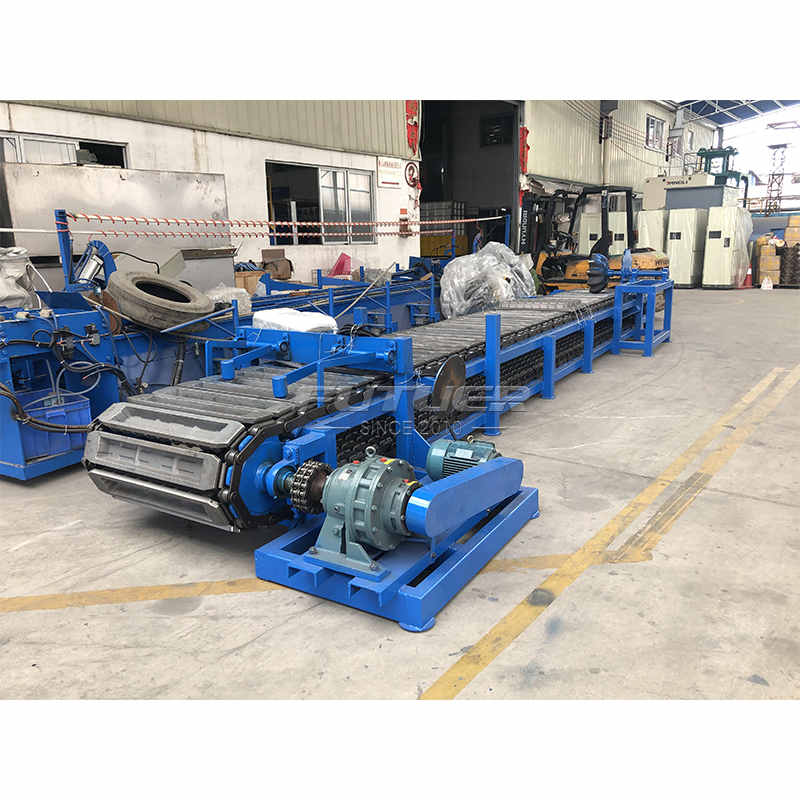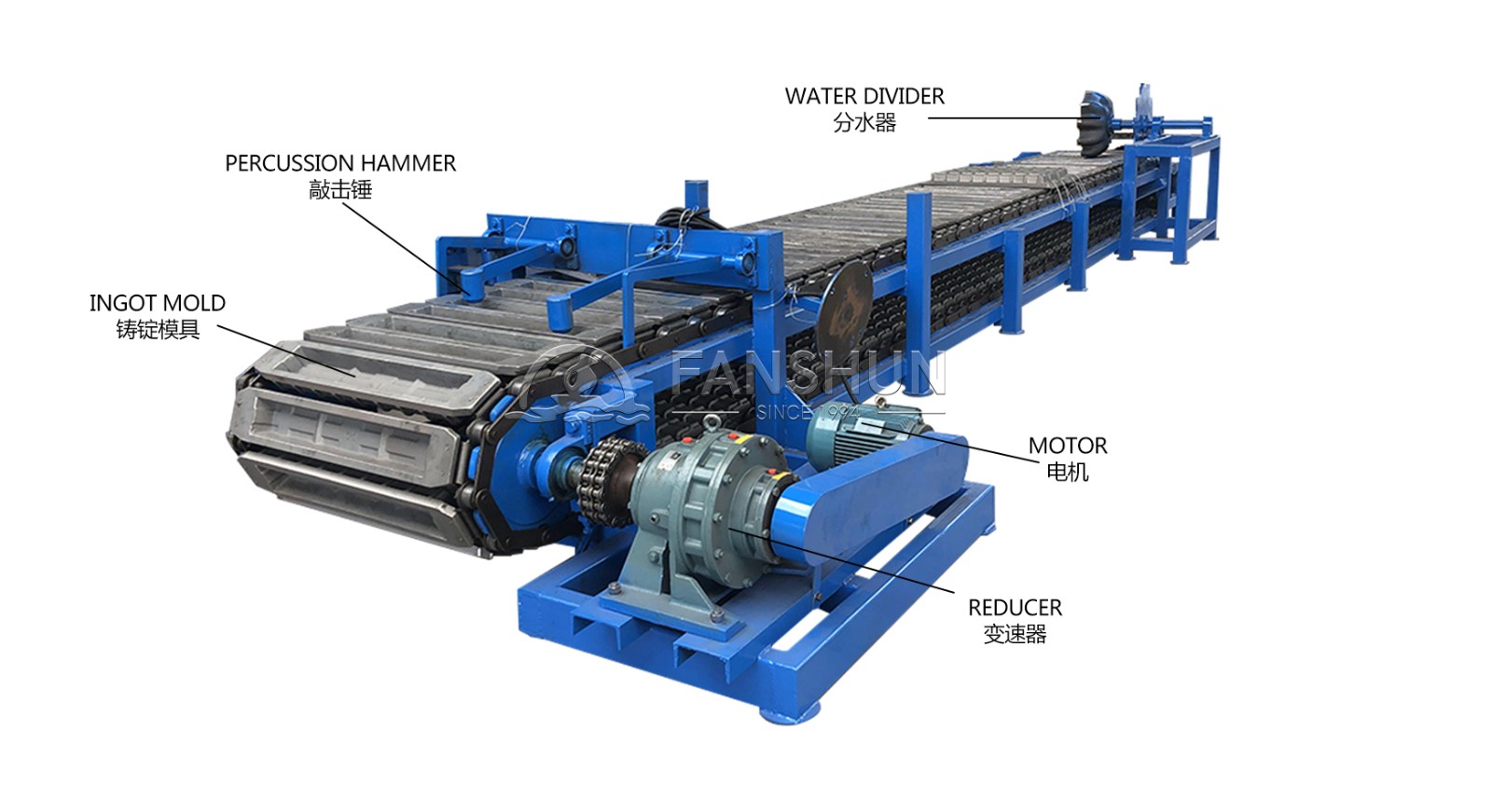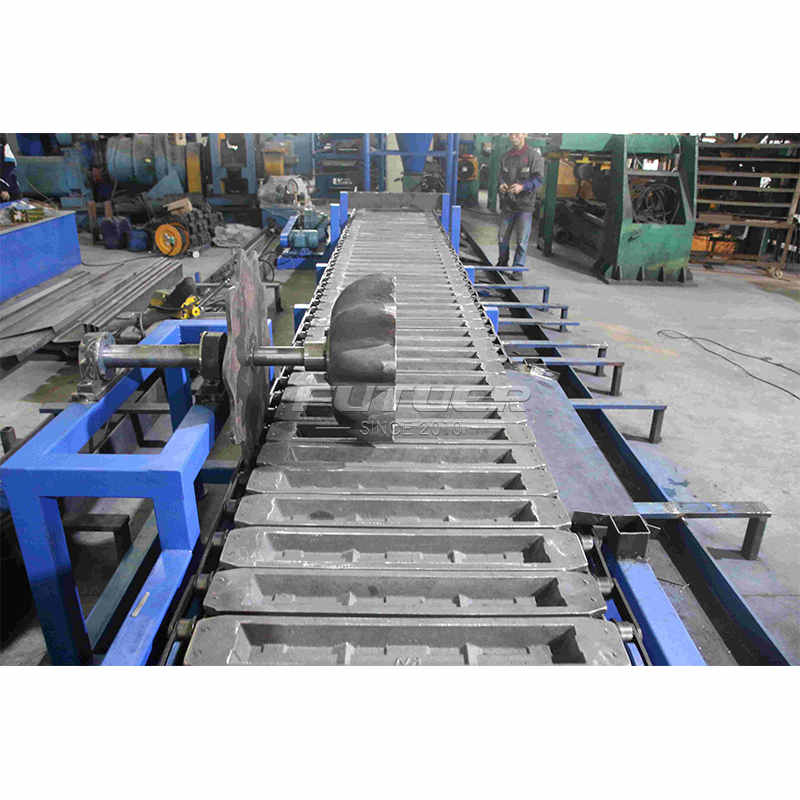How to Solve the Noise and Vibration Problems During the Use of Continuous Casting Copper and Aluminum Ingot Casting Machines
The use of continuous casting copper ingot machines and alhttps://www.copperfurnace.com/newsinfo-revolutionizing-the-metal-industry-the-emergence-of-the-automatic-ingot-casting-machine.htmluminum ingot casting machines is essential in industries that produce large volumes of metal ingots for applications in construction, electronics, and manufacturing. These machines, known for their high efficiency, help in transforming molten metals into solid ingots continuously. However, noise and vibration issues can arise during the operation of these machines, which can affect both their performance and workplace safety. Reducing noise and vibration not only enhances machine efficiency but also ensures a safer and more comfortable working environment. This article discusses how manufacturers can tackle these challenges in machines like the copper continuous casting machine, aluminum continuous casting machine, and ingot molding machine to maintain operational stability.
Understanding the Causes of Noise and Vibration
Noise and vibration in ingot continuous casting equipment arise from various sources. These include mechanical friction, unbalanced components, improper installation, and irregularities in the cooling and solidification processes. In a continuous ingot casting system, these issues can escalate if not properly managed, leading to poor ingot quality, equipment failure, and increased maintenance costs.
For a copper continuous casting machine, vibration may stem from the high rotational speeds involved in casting copper rods or billets. In contrast, an aluminum continuous casting machine might experience noise from the rapid cooling processes or from molds and rollers that are misaligned or poorly lubricated. Addressing these issues requires a multifaceted approach involving machine maintenance, component quality, and operational adjustments.
Key Solutions to Noise and Vibration Problems
Proper Machine Alignment and InstallationOne of the leading causes of vibration in both copper continuous casting machines and aluminum continuous casting machines is poor installation or misalignment of components. Ensuring that the machine is correctly aligned during installation is crucial to avoid excessive vibration during operation. Uneven floors or unstable bases can also cause the machine to vibrate, creating additional noise and wear.
Regular alignment checks should be part of the maintenance schedule for any ingot continuous casting equipment. Using high-precision alignment tools ensures that molds, rollers, and casting beds are properly positioned. In some cases, installing vibration-dampening mounts beneath the machine can reduce transmission of vibrations to the surrounding environment.
Lubrication and Maintenance of Moving PartsFriction between moving parts, such as rollers, molds, and the conveyor system, is a common source of both noise and vibration. Regular lubrication of these components is critical in both copper continuous casting machines and aluminum continuous casting machines. Insufficient lubrication can lead to increased wear on machine parts, causing them to vibrate and produce noise during operation.
In an ingot molding machine, maintaining proper lubrication also ensures that the molds move smoothly during the solidification process, reducing the potential for vibration-induced defects in the ingots. Manufacturers should implement a preventive maintenance schedule that includes checking lubrication levels and applying appropriate lubricants to all critical components.
Balancing Rotating ComponentsIn machines like the copper continuous casting machine, where rotating components such as rollers and spools are crucial, ensuring that these parts are well-balanced is vital for minimizing vibration. Even a slight imbalance in these components can lead to significant vibration, particularly at high speeds, contributing to both noise and premature wear of the machine.
Balancing rotating parts using dynamic balancing techniques can help eliminate these issues. In addition, manufacturers should periodically inspect and replace worn or damaged parts to prevent further imbalances from developing. In aluminum continuous casting machines, where lower rotational speeds are often used, maintaining balance is still important for ensuring smooth operation and reducing noise.
Use of Noise Reduction MaterialsThe housing and framework of ingot continuous casting equipment can amplify the noise produced by mechanical vibrations. Applying sound-dampening materials to the machine's casing, such as acoustic panels or insulation foam, can significantly reduce the noise level in the surrounding environment. In facilities where multiple copper continuous casting machines or aluminum continuous casting machines are operating, noise reduction materials can be essential to maintaining acceptable noise levels for workers.
In some cases, manufacturers may also opt to enclose the casting system in a soundproof room, particularly in environments where noise regulations are stringent. This ensures that the noise from the continuous ingot casting system does not affect workers or neighboring operations.
Upgrading to Vibration-Resistant EquipmentNewer models of copper continuous casting machines and aluminum continuous casting machines are often designed with features that minimize vibration. These machines may incorporate vibration-dampening technologies, such as hydraulic or pneumatic components that absorb and dissipate vibrations before they can affect the casting process.
When investing in an ingot molding machine, it is worth considering machines that have been specifically engineered for low-vibration operation. Such machines reduce the need for frequent maintenance and provide a more stable casting environment, which can lead to higher-quality ingots and longer equipment lifespans.
Improving Cooling System EfficiencyIn an aluminum continuous casting machine, the cooling process is critical for ensuring that the molten aluminum solidifies uniformly into high-quality ingots. However, if the cooling system is not operating efficiently, it can lead to rapid temperature fluctuations, which may cause the machine components to vibrate. Similarly, in a copper continuous casting machine, improper cooling can cause thermal stresses that increase vibration levels.
To address these issues, manufacturers should ensure that the cooling systems in their continuous ingot casting systems are well-maintained and operating at optimal levels. This includes regular inspections of cooling channels, pumps, and heat exchangers to prevent blockages or malfunctions that could lead to uneven cooling and subsequent vibrations.
Implementing Vibration Monitoring SystemsTo proactively manage vibration-related issues in ingot continuous casting equipment, many manufacturers are now implementing real-time vibration monitoring systems. These systems use sensors to measure vibration levels at key points in the machine and alert operators to any abnormal readings.
By continuously monitoring vibration levels in copper continuous casting machines and aluminum continuous casting machines, operators can quickly identify and address potential issues before they escalate into larger problems. This not only helps maintain product quality but also reduces the risk of equipment damage and costly downtime.
Training Operators for Proper Machine UseHuman error can also contribute to noise and vibration problems during the use of continuous ingot casting systems. Proper training of machine operators is essential to ensure that the machines are used correctly and within their operational limits. Overloading the machine or running it at speeds higher than recommended can exacerbate noise and vibration issues.
Operators should be trained to recognize early signs of vibration or noise problems and take appropriate action. This might involve slowing down the casting process, adjusting machine settings, or initiating maintenance checks. Having a well-trained team helps prevent operational errors that could lead to excessive wear or vibration in the ingot molding machine.
Conclusion
Noise and vibration are common challenges in the operation of continuous casting copper ingot machines and aluminum ingot casting machines. However, by addressing the root causes and implementing solutions such as proper alignment, regular maintenance, and upgrading to vibration-resistant equipment, manufacturers can significantly reduce these issues. Whether you're operating a copper continuous casting machine or an aluminum continuous casting machine, maintaining a smooth and stable operation not only enhances productivity but also ensures a safer and more comfortable working environment.
Investing in the right technologies and practices to manage noise and vibration will lead to better performance, lower maintenance costs, and higher-quality ingots in the long run. As the metal casting industry continues to evolve, these solutions will be crucial for ensuring that ingot continuous casting equipment remains efficient, reliable, and compliant with safety standards.





